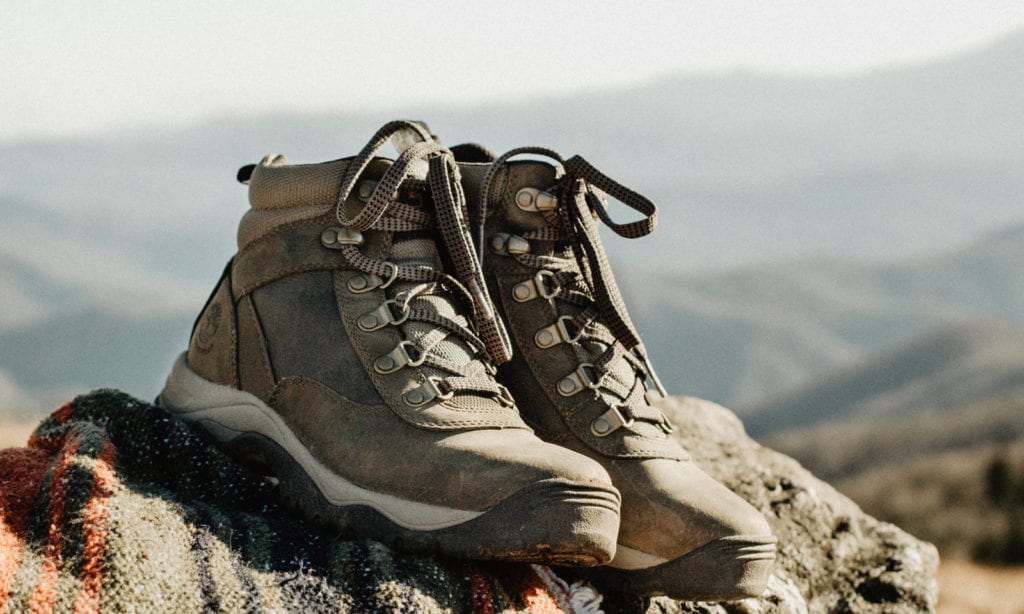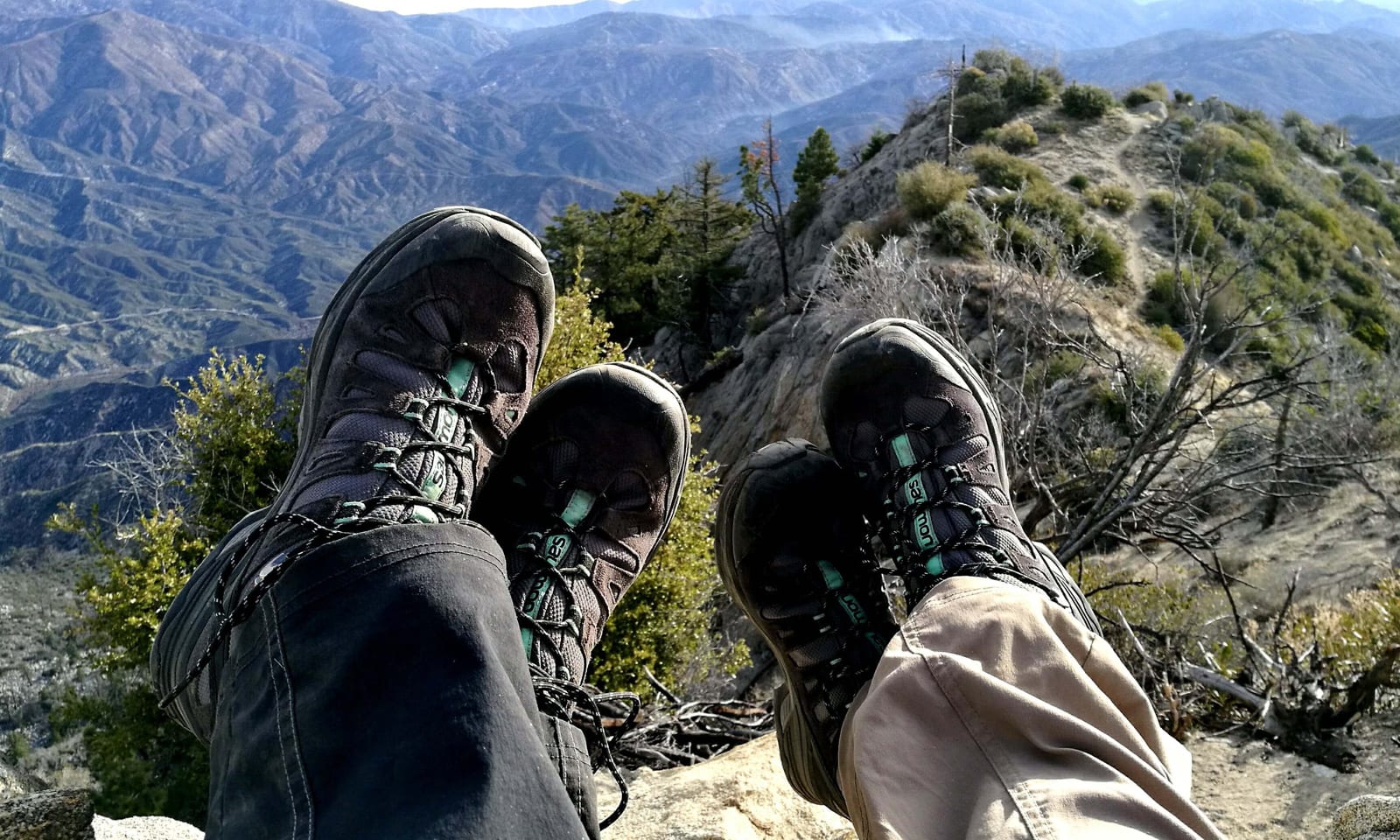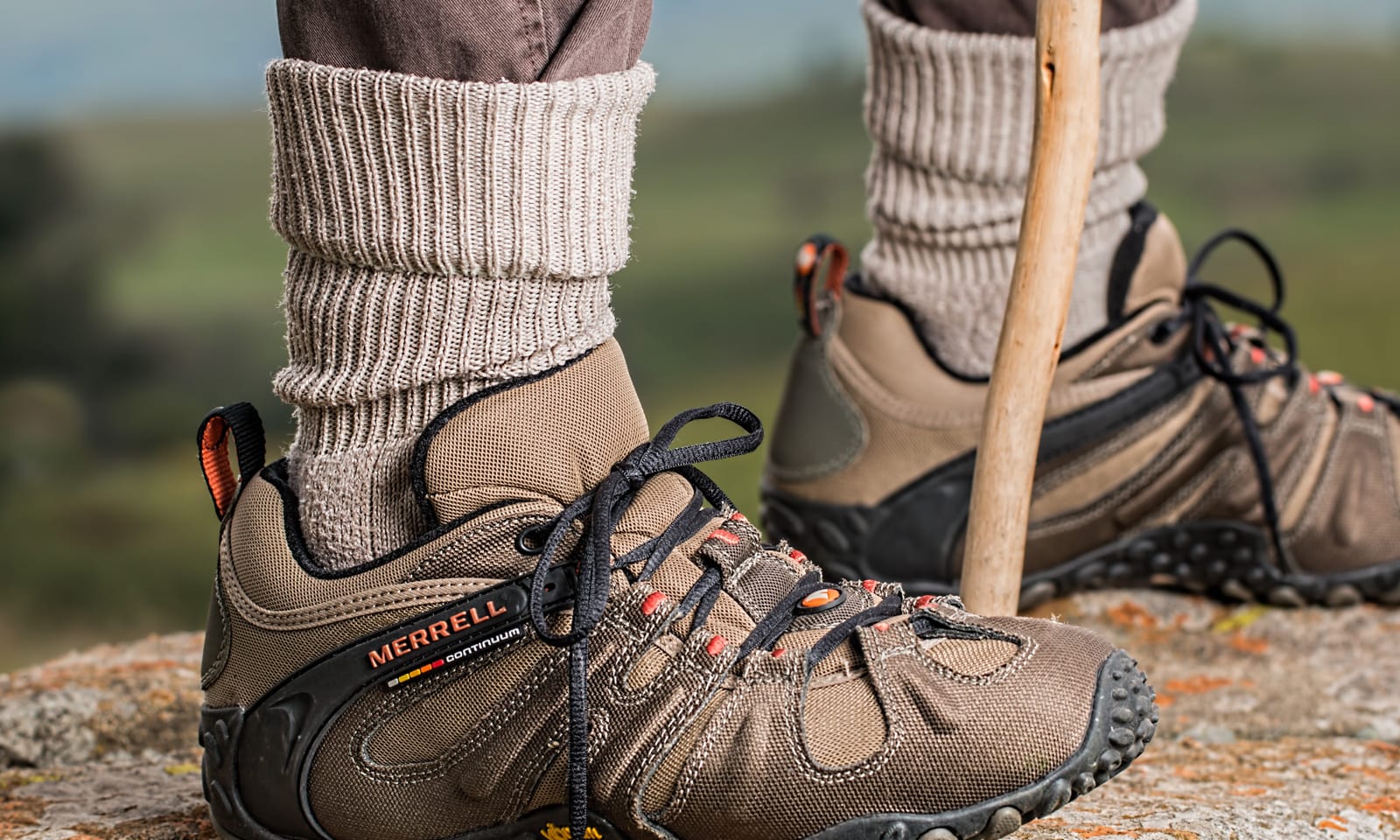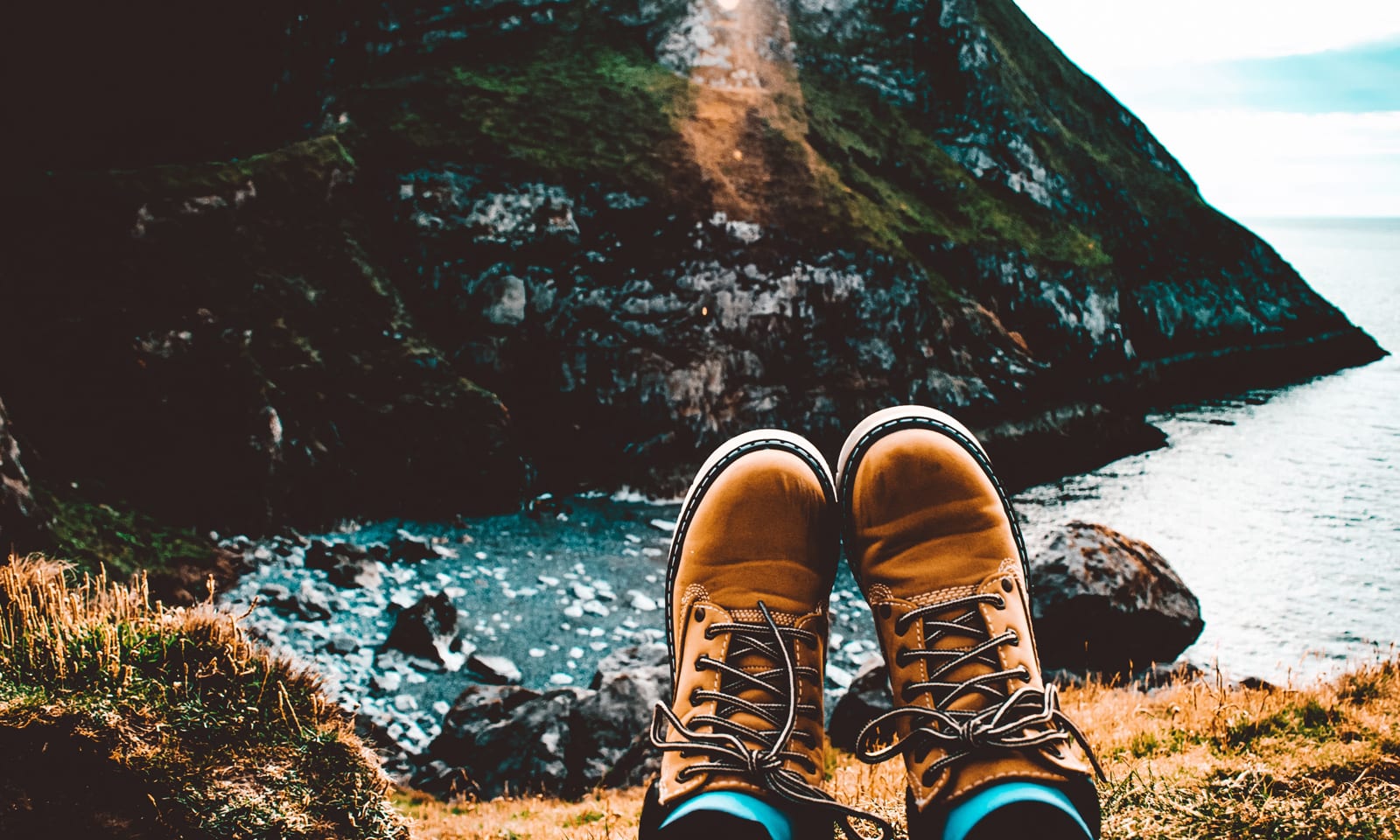If the Shoe Fits: Finding the Right Shoes for Hiking

When it comes to choosing hiking shoes, you always need to make sure that you’re comfortable and protected above all else. Hiking puts a lot more stress on your feet than walking around on flat, man-made surfaces, and even the smallest difference in padding or materials can have a significant impact on your experience while wearing hiking boots.
Even if you only treat it as an occasional hobby, a bad pair of hiking boots can completely ruin an otherwise great trip. Conversely, a good pair can make a hiking trip through awful weather conditions much more comfortable. So, how are you supposed to know which shoes are right for you?
There’s a lot of different factors and elements you’ll need to consider (some much more important than others), but it’s not hard to break it down into about five or six different aspects. We at ShoeAdviser know how hard it can be to process a lot of overwhelming information, and hopefully, this guide will provide a nice, structured set of advice to help you track down your ideal hiking shoes.
The Type of Shoe
Not all boots are created equally. There are a few different styles and types of hiking shoe that you can buy, and they’ll have slight differences in terms of design and functionality. This won’t seem too important at first, but it can make a big difference when it comes to foot support, padding, and weather-resistance.

Two shoes with the same level of padding and protection can still feel dramatically different due to their design, and even something as small as a larger tongue or a wider toe area can be enough to change how they feel on your feet. For example, mountaineering boots are usually designed with a lot of insulation and grip, often going well above your ankle.
They’re a great way to keep your feet protected, but they’re also very rigid and don’t allow for much flexibility, which can be a problem if you like to move at a brisk pace. They also take a lot longer to ‘break in,’ since they’re generally made of tougher materials that take longer to stretch or mold around your foot shape.
On the other extreme, you get day hiking boots, which are a much more lightweight and maneuverable piece of footwear for hiking trips. They’re easy to wear and often use breathable materials, but lose out on some of the protection and physical durability of stronger types. However, this isn’t always guaranteed – the type of a shoe gives you a general idea of what it’ll be like, but you can still find hiking boots that go above or below your expectations.
Related: Hiking Shoes for Women.
The Fit
The way your new shoes or boots fit is perhaps the most important part of any purchase. A shoe that’s uncomfortable or painful to wear will only make your hikes more annoying and frustrating, and they won’t always “break in” depending on the materials they’re made of. If you aren’t careful, you might even end up causing temporary damage to your foot, especially if it’s tight enough to rub against your bare skin or keep water and sweat trapped for long periods of time.
If you’re struggling to find a pair that fits, start ignoring the numbered sizes entirely – while these are a great guideline, they can often be slightly inaccurate for hiking gear, since the bulkiness of the shoe can take up some of that space. Padding can be just as much of a help as a hindrance, especially if it makes your new shoes feel claustrophobic, and you might be wearing thicker socks during the actual hike that emphasize this problem even further.
Not all shoes will be designed for your foot shape, either. This is a common problem that flat-footed people run into, and having the wrong kind of arch or heel support puts you at a greater risk of harming your feet in the long run. Even if you have a normal foot arch, it’s still possible to choose a shoe with the wrong kind of supporting material, especially if you’re focusing on the exterior design more than the interior padding.
Durability
In general, hiking is much more intense than walking. This means that you’ll be putting your feet – and, therefore, your shoes – through a lot more, especially in bad weather or on uneven surfaces. A good hiking shoe will be able to keep your feet safe and dry without damaging itself in the process, but not all materials are equally suited to this kind of purpose.

Although it’s not always true, in most cases, a flexible material will be less durable than a rigid one: that is why a lot of rain-resistant boots use a lot of rubber. If you are the kind of hiker that likes to take on harsh weather, long trails and difficult ground, you should definitely invest in something that’ll last longer.
This can also matter in terms of price, too. A shoe that wears out quickly will need to be replaced, so even reasonably cheap deals can end up costing quite a lot of money if you’re constantly re-buying the same shoe each time it breaks.
An expensive pair of long-lived shoes can actually cost less in the long run, but it really depends on how often you’ll use them – if hiking is something you’re just wanting to try out, and you might not commit to doing it frequently, then a cheaper option will save more money if you end up dropping the hobby.
The material isn’t the only part that needs to be durable, either. Stitching and seams are literally the things that hold your shoes together, and the weaker they are, the more likely your shoes are to spontaneously fall apart or wear out while you’re in the middle of a hike. Since hiking shoes are supposed to take on more demanding conditions than most casual footwear, they need to be built to handle the extra stress, and seams are often the most vulnerable when it comes to wear and tear.
Water Resistance and Waterproofing
Water is one of any hiker’s mortal enemies, and it’s not hard to see why. It can damage your shoes until they’re falling apart, soak into your socks to make the rest of your hike horribly uncomfortable, and can even cause skin damage or blisters if it’s not dealt with properly. For some people, water resistance is actually the main draw of having good hiking footwear, since it gets rid of one of the most annoying and unpredictable hazards in the entire activity.
It’s important to note that ‘water resistance’ and ‘being waterproof’ don’t always mean the same thing. Some manufacturers will say that their shoes are resistant to water when they’re referring to the materials, meaning that the shoes themselves won’t suffer water damage, but it still might leak through onto your feet. This distinction is actually quite important since certain shoes might even be designed with ventilation holes that can still let small amounts of water in.
It’s easy to end up with blisters if you aren’t adequately protected against water, so this should definitely be a top priority if you live in a cold and wet climate, or at least like to hike in areas where water pools and puddles are incredibly common. Not only that, but they can actually ‘stack up’ with other causes to create much more painful blisters and sores – if your shoes are both too small and vulnerable to water leaks, you’ll find yourself in extreme pain very often.
Your Skill Level
As odd as it might sound, you don’t always have to rely purely on your shoe to keep you safe. Experienced hikers will have strengthened certain muscles to give themselves more natural foot support, as well as helping them avoid common cramps or other physical problems that can occur when you’re moving across uneven terrain.

Beginners will rely on the extra support from their shoes a lot more, so the amount of protection and padding you’ll need will vary as you spend more time developing your hiking skills. This can inadvertently lead to newer hikers gravitating towards heavier boots, whereas the more experienced hobbyists will go for lighter and less rigid alternatives.
This might seem like its backward, but it actually makes sense, since the padding and protection in a heavy hiking shoe account for most of its weight. Once you stop needing that extra comfort and protection, you can easily shed off the extra bulk and go for something lightweight.
Conclusion
There’s no easy way to decide on a single type or style of shoe you should get since no two people will have precisely the same opinions and requirements when it comes to hiking footwear. It’s good to try and understand which features and elements are important to you before you make a purchase since it’s entirely possible to buy something that you don’t actually need.
You should also work out where you’ll probably be walking. Not all hikers take on really rough, mountainous terrain, and you can still be a hiker while sticking to smooth grassy slopes or hills. Not all features will be useful in a certain situation (such as waterproofing in hot climates), and there will be some hiking trails that you can tackle with any kind of footwear, even the most lightweight and unprotected styles.
In the end, your purchase should be based on your needs, rather than the recommendations of the people around you. Everybody has a different tolerance for things like arch support, sweat build-up and wet feet, so it’s best to choose a pair that work with your preferences and limitations rather than selecting a random, popular brand.